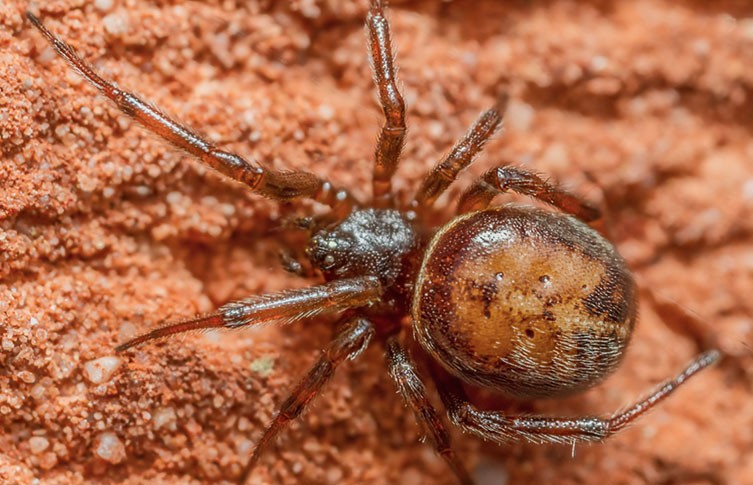
The Brits were told to shut windows for the next four weeks due to a “Toxic Invader.” They’re not quite invading, but False Widow spiders are certainly on the move in the UK. As mating season commences, these eight-legged creatures are seeking shelter indoors, prompting reminders to identify them correctly and take sensible precautions.
False Widow Spiders
Male False Widow spiders are typically 10mm in size. Females may be up to 14mm in size. These spiders are dark with purplish-brown, evenly-coloured dark legs or with lighter stripes. They are often confused with the more dangerous Black Widow, but are generally smaller and have different markings on their abdomen. Females have globular, shiny abdomens. Male abdomens are smaller and less rounded, but have clearer markings. Their webs are a tangle of criss-cross threads which may become quite dense in the Centre if left undisturbed.
To know more about False widow, refer to Natural History Museum.

Mating Season and Behavior of the False Widow
Every autumn there are reports of false widow spiders becoming uninvited eight-legged houseguests in homes across the UK. In the area spider mating season typically begins in early August and lasts through October, with peak activity often occurring in September. During this time, people are more likely to see male spiders venturing indoors as they search for mates.
During mating season, False Widow spiders are more likely to seek shelter indoors, searching for warm, dark, and sheltered places to build their webs and find mates. People commonly find them in sheds, garages, attics, and under furniture. Although these spiders generally avoid aggression, they may bite when they feel threatened or someone accidentally disturbs them.
Are False Widows Aggressive?
People often mistake false widows for deadly spiders, but they aren’t. Although they do have a venomous bite, the venom is not particularly potent. Usually the only symptom is pain at the site which may radiate away from the bite. It ordinarily lasts between one and 12 hours, and rarely for more than 24 hours. Often, the symptoms are no worse than the pain of a wasp sting. They are only known to bite when provoked or trapped against skin.
Prevention
To prevent False Widow spiders from entering homes, pest control experts recommend reducing their food source by eliminating other insects, sealing entry points like cracks and gaps, and maintaining a tidy home to eliminate hiding places. “August is when male spiders become active”, says expert.
In search for a mate, they’ll wander through open windows, up walls, into bathtubs – anywhere they can. Expert explains it’s not merely unsealed windows that attract these arachnids – it’s the accumulated grime and detritus commonly found on window ledges and surrounds.
He clarifies that dust, insect remains, and debris on window frames attract spiders. Webs cling better to rough or grimy surfaces. That’s why cleaning your windows is just as important as keeping them shut.”
Myths And Facts
While False widow spiders can bite, false widows are significantly less venomous than black widows and pose minimal risk to healthy adults. They only bite in self-defense when threatened. While it’s wise to take precautions, it’s also important to remember that these are a natural part of the UK ecosystem and play a role in controlling insect populations.
This mating season, let’s coexist peacefully. Be aware of False Widows, take steps to minimize encounters, but don’t let fear dictate your actions. They’re part of our ecosystem, and while a bite warrants attention, it’s rarely a serious event.
Keep fueling your curiosity—stay tuned to The World Times .



